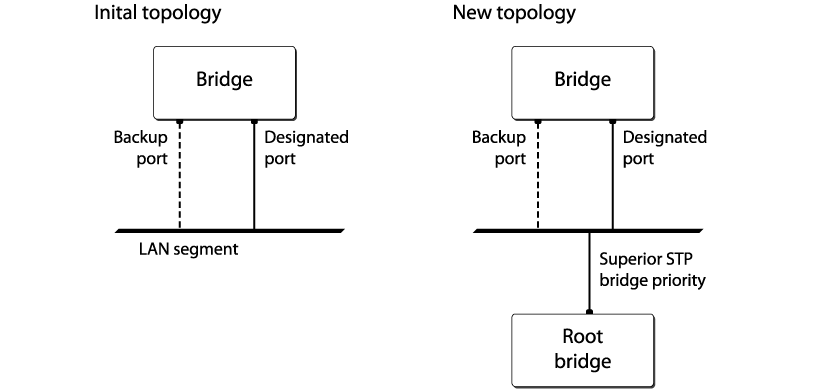In Example of Root Port Rapid Behavior, the diagram on the left displays the initial network topology with a single bridge having the following:
The diagram on the right displays a new bridge that:

If the backup port receives the BPDU first, STP processes this packet and temporarily elects this port as the new root port while the designated port‘s role remains unchanged. If the new root port is immediately put into the forwarding state, there is a loop between these two ports.
To prevent this type of loop from occurring, the recent backup timer starts. The root port transition rule does not allow a new root port to be in the forwarding state until the recent backup timer expires.
Another situation may arise if you have more than one bridge and you lower the port cost for the alternate port, which makes it the new root port. The previous root port is now an alternate port. Depending on your STP implementation, STP may set the new root port to the forwarding state before setting the alternate port to the blocking state. This may cause a loop.
To prevent this type of loop from occurring, the recent root timer starts when the port leaves the root port role. The timer stops if the port enters the blocking state. RSTP (Rapid Spanning Tree Protocol) requires that the recent root timer stop on the previous root port before the new root port can enter the forwarding state.

 Print
this page
Print
this page Email this topic
Email this topic Feedback
Feedback